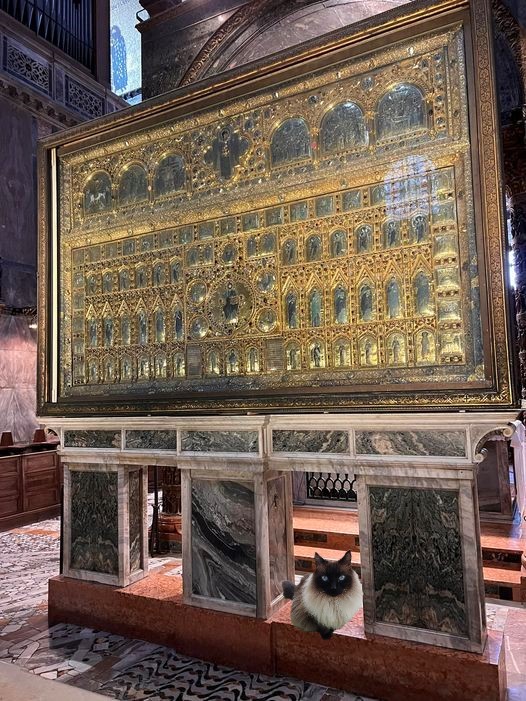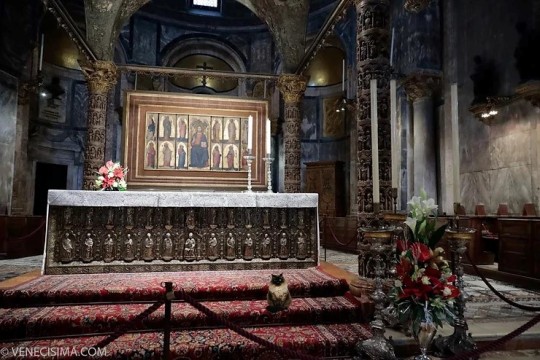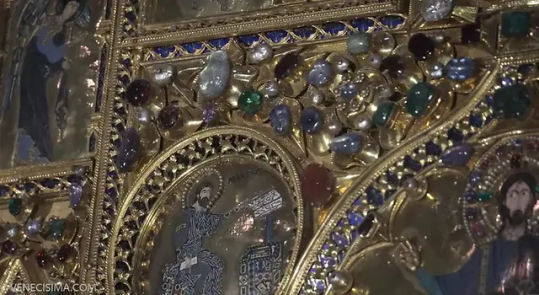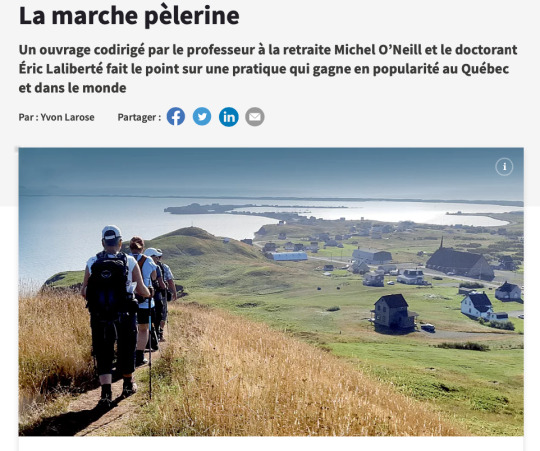#via de la plata
Text

Fachada, Convento de San Esteban, Salamanca, 1984.
#architecture#plateresque#monastery#people#salamanca#castilla y león#españa#1984#photographers on tumblr#via de la plata#camino santiago
20 notes
·
View notes
Text












Sélection de vidéos sur youtube avec les mots-clés "Compostele 2023"
#micompostela#santiago de compostela#camino compostela#camino de santiago#camino portugues#via de la plata#camino portugues micompostela#camino francés#camino del norte @ unk#caminodesantiago#youtube
2 notes
·
View notes
Text

Conchas de vieira de piedra, Casa de las Conchas, Salamanca, 2011.
#scallop shell#historic building#casa de las conchas#salamanca#castilla y león#españa#2012#via de la plata#camino santiago
5 notes
·
View notes
Text

Via de la Plata
Der Weg wird oft fälschlicherweise als Silberstrasse bezeichnet, stammt aber aus dem arbischen Wortschatz. Es bedeutet: Gut ausgebaute Strasse.
1 note
·
View note
Text

2023-06-26
#oviedo#babia y luna#playa del silencio#puerto de san sebastian#sidreria#burger#costa verde#via de la plata#camino de la costa#cabras
1 note
·
View note
Text
L'homme qui dessinait son chemin sur la Via de la Plata
Les Chemins de Compostelle sont chaque fois l’occasion de rencontrer des êtres particuliers, de ces hommes ou femmes qui marquent votre voyage par leur quête, leur attitude, leur sensibilité ou parfois une passion anachronique sur de tels itinéraires. Par le passé j’ai ainsi côtoyé des photographes lourdement chargés, des équipes de tournage et leur logistique importante, des animateurs sociaux…

View On WordPress
0 notes
Text
Incontri ravvicinati sul cammino Via de la Plata.
=📷=
E il gallo cantò per la seconda volta; allora Pietro si ricordò della parola che Gesu' gli aveva detta: "Prima che il gallo, abbia cantato due volte, tu mi rinnegherai tre volte".
Mr. 14:72 📖
29 notes
·
View notes
Text
Atterra domenica prossima in Italia (...)Javier Milei(...), a Roma per assistere alla canonizzazione di “Mama Antula” (...), dove incontrerà il suo connazionale Papa Francesco (...), poi diversi protagonisti delle istituzioni, tra cui il Premier Giorgia Meloni.
Alle prese in patria con (...) resistenze figlie del fallimentare status quo argentino, e presentato in Italia come personaggio caricaturale, Milei è invece un caso interessante (...), visto che propone riforme reaganian-tatcheriane a latitudini sconquassate da livelli di assistenzialismo stellari (come le nostre, ndr).
(...) Lodato dal Fondo Monetario Internazionale per l’encomiabile piano di riforme che puntano alla difficile stabilizzazione del paese, tanto da avergli staccato la cedola di un finanziamento di 4,7 miliardi di dollari, Milei propone linguaggio assai diretto verso i cittadini, quasi virulento ma di verità (“No hay plata”, non ci sono soldi) e idee liberiste che in Italia fanno storcere il naso.
E si permette di dire che sì, è licenziabile anche un dipendente pubblico (...), che il perimetro dello Stato spendaccione va ristretto a favore dell’iniziativa privata, e che la spesa pubblica va tagliata con la motosega.
A prescindere da come andrà (lui dice di lavorare per la prospettiva dei prossimi 35 anni), la speranza è che una simile mentalità possa contagiare il centrodestra italiano che invece fatica pure lui a mollare il suo approccio statalista.
E perché no, cominci a pensare di tagliare la spesa pubblica eccessiva che ci fa costare troppo lo Stato e pagare troppe tasse, vendere immobili pubblici per ridurre il debito pubblico, riformare la pubblica istruzione (...), la pubblica amministrazione (...), la giustizia politicizzata che sbaglia tre volte al giorno, ogni giorno, iniziare a ridurre il peso di partecipate e municipalizzate, rivedere le concessioni dinastiche su demanio e trasporto, inaugurare una serissima lotta alla burocrazia. (...)
E chissà che lo ascolti senza pregiudizio anche l’opposizione, impegnata a fare proposte di legge costituzionali lunari come quella di rinominare la “Camera dei Deputati’ in “Camera delle Deputate e dei Deputati”. Quando si dice, le priorità. Afuera…!
Tocca cercarle col lanternino qui da noi e pescarle su Il Riformista, 'ste analisi oggettive, via https://www.ilriformista.it/javier-milei-arriva-in-italia-speranza-contagi-qualcuno-afuera-liberale-407258/
Del resto che te lo dico affà? Verrà, passerà ma laggente docilmente si concentrerà dove li portano col guinzaglio, cioè su veriprobblemi hahahah, quelli che gli evidenzia l'informazzione libbera - non tv e giornali ma I SOCIAL, territorio de-neuronalizzato tutto sentimient' dove guida la quantità mirata, un tempo bot ora AI based senza la I.
Così sedicenti destri senza memoria (quella ce l'hanno nei giga degli smartphone) si caricano tra loro e diventano docili strumenti per deviare le indignazioni dal VERO NEMICO STATAL CLIENTELARE, esattamente come a sinistra li fan diventare Askatasuna Extinction Rebellion - notare: tutti putainisti, antisemiti, antikapitalisti non allineati ma lo Stato non si tocca né si nomina.
«Ahi serva Italia, di dolore ostello, nave sanza neuroni in gran tempesta, donna e di provincie e di bordello!» (manometto pure Purgatorio, canto VI, vv. 76-78).
11 notes
·
View notes
Text
LA PALA D'ORO DE SAN MARCOS: LA JOYA MÁS GRANDE DEL MUNDO
THE PALA D'ORO OF SAN MARCOS: THE WORLD'S LARGEST JEWEL

This jewel (I don't mean Mishima) has remained hidden for centuries, because it was not shown to the parishioners on a daily basis, but was hidden behind other works of art and was only revealed at certain celebrations by means of a hidden mechanism.
Esta joya (no me refiero a Mishima) ha permanecido oculta durante siglos, porque no se mostraba de modo diario a los feligreses sino que quedaba oculta detrás de otras obras de arte y sólo se descubría en determinadas celebraciones mediante un mecanismo oculto.

La pala d'Oro cuando se muestra en festividades especiales frente a los fieles mediante un mecanismo de giro. Foto: Gérard, CC BY-SA 4.0, via Wikimedia Commons
The pala d'Oro when it is displayed on special festivities in front of the faithful by means of a turning mechanism. Photo: Gérard, CC BY-SA 4.0, via Wikimedia Commons.

La pala d'Oro oculta tras el retablo de Maffeo da Verona del s. XVII
The pala d'Oro hidden behind Maffeo da Verona's 17th century altarpiece

El retablo es inmenso: 3 metros de ancho por 2 metros de alto de oro y plata dorada; 187 placas de esmalte; 1.927 gemas: 526 perlas, 330 granates, 320 esmeraldas, 255 zafiros, 183 amatistas, 175 ágatas, 75 rubíes, 34 topacios, 16 cornalinas, y 13 jaspes ¡Todo un gigantesco joyero!
The tableau is immense: 3 metres wide by 2 metres high in gold and silver gilt; 187 enamel plates; 1,927 gems: 526 pearls, 330 garnets, 320 emeralds, 255 sapphires, 183 amethysts, 175 agates, 75 rubies, 34 topazes, 16 carnelians, and 13 jaspers . A gigantic jewellery box!
(Español / English)
La Pala d'Oro permaneció ocultada celosamente durante 900 años a casi todas las miradas, lo que alimentó la imaginación colectiva con extrañas historias sobre lo que contenía, inclusive se creyó que era una puerta de conexión con el más allá o que tenía tal fuerza espiritual, que quien lo miraba, se convertía al catolicismo.
Y es que la Pala d'Oro se ocultaba entre dos retablos pintados que cubrían ambos lados y la encerraban con catorce cerrojos como una caja fuerte protectora.
Han llegado hasta tres retablos pintados que lo protegieron, de diferentes épocas. Dos de ellos se pueden admirar en el Museo de la Iglesia de San Marcos: el más destacado, pintado por Paolo Veneziano del siglo XIV, y el más reciente, obra de Maffeo da Verona del XVII. El tercero, atribuido a Francesco de’ Franceschi, del siglo XV que está en el prebisterio.
En la actualidad, puede admirarse en cualquier momento, pagando un suplemento adicional se accede desde la derecha del altar mayor. Y os aseguro, que merece la pena ver esta gran joya medieval.
***
The Pala d'Oro remained jealously hidden for 900 years from almost all eyes, which fed the collective imagination with strange stories about what it contained, including the belief that it was a gateway to the afterlife or that it had such spiritual power that those who looked at it were converted to Catholicism.
The Pala d'Oro was hidden between two painted altarpieces that covered both sides and enclosed it with fourteen locks like a protective safe.
Three painted altarpieces from different periods have survived to protect it. Two of them can be admired in the Museum of the Church of San Marco: the most important, painted by Paolo Veneziano in the 14th century, and the most recent, by Maffeo da Verona in the 17th century. The third, attributed to Francesco de' Franceschi, dates from the 15th century and is in the prebistery.
Nowadays, it can be admired at any time, and for an additional fee it can be accessed from the right of the main altar. And I assure you, it is well worth seeing this great medieval jewel.
Source: venecisima.com
#venice#venezia#venecia#san marco#pala d'oro#medieval jewel#joya medieval#arte bizantino#byzantine art
4 notes
·
View notes
Text
Urdaneta didn’t discover how to get anywhere, but rather less glamorously but no less importantly discovered how to get back. Until 1565, no fleet had succeeded in sailing east from Asia back across the Pacific to the Americas. [...] The importance of this achievement was well understood at the time: the King of Spain had made it an explicit objective of the voyage, and Urdaneta’s arrival in Mexico was cause for public celebration. A letter of the time said that ‘those of Mexico are mighty proud of their discovery, which gives them to believe that they will be the center of the world.’
They were [...] arguably correct in this belief. The trading route that resulted from Urdaneta’s discovery – that of the Manila galleons – brought the silver from the Americas that underpinned China’s money supply and transformed the global economy.
This Ruta de la Plata – or ‘Silver Way’ – characterised a period when commerce between China and Spanish America formed the lynchpin of trade routes spanning four continents. It also marked the first time the entire world had been knitted together with the global trade and financial networks that form the basis of our modern globalised world [...].
---
Urdaneta’s discovery and its lasting significance seem largely forgotten, at least in the English-speaking world, among the dustier shelves of the historical record. [...] [Before the Industrial Revolution] [t]he pivotal role of Spanish America and China in these previous 250 years of global integration has been obscured and superseded by the prevailing narrative of Anglo-American predominance [...].
[W]hy has he [Urdaneta] been forgotten in the English-speaking world? Indeed, the Manila galleon, the silver trade and the role of the Spanish silver peso seem to be largely absent from Anglo-American history texts, except those specialising in the precise period or subject. This particular amnesia can be dated. The ‘Indies’ trade in general, and silver in particular, remain central to many of the arguments about economics in Adam Smith’s The Wealth of Nations, published in 1776. But as the Spanish Empire receded from the scene, and English-speakers found they had other geopolitical and economic priorities, not least the Industrial Revolution, forgetfulness began to set in.
---
From the heights of American global dominance, the fork of history that led to the Spanish Empire seemed something of a cul-de-sac, tangentially relevant to further global progress. Two hundred and fifty years of Sino-Spanish trade were relegated – again, in the English-speaking world – to specialist journals [...].
It is important to bring early-modern Asia back into the prevailing historical narrative, to update our maps by making them older. [...]
The link between the narrative of the Silver Way and the later Anglo-American narrative is silver, or rather the monetisation and integration of the world’s economies via currency and financial markets. The link remains today in the form of the US dollar and the Chinese yuan, both of which are descended from the Spanish peso.
---
Text by: Peter Gordon. “Why the 16th century still matters: China, Spanish America and globalization.” Asian Review of Books. 20 January 2017. [Published online at ARoB’s Essays and Non-fiction sections. Bold emphasis and some paragraph breaks/contractions added by me.]
26 notes
·
View notes
Text

Rosetón, iglesia, Zamora, 2011.
#architecture#romanesque#rose window#stone#church#zamora#castilla y león#españa#2011#camino santiago#via de la plata
44 notes
·
View notes
Text

La marche pèlerine | Société | Univ Laval | Nouvelles | 20 mai 2021
«Dans mes travaux sur le phénomène pèlerin au Québec, j’ai répertorié une trentaine de parcours de longue ou de courte durée, explique Michel O’Neill.
J’ai estimé qu’entre 1999 et 2019, ces parcours avaient attiré un total d’environ 16 000 personnes.
L’intérêt québécois pour la marche pèlerine s’inscrit dans un mouvement planétaire qui a eu, comme point de départ, le succès fulgurant des chemins de Compostelle depuis une quarantaine d’années. » (...)
Ses observations portent notamment sur le genre et l’âge de ceux et celles qui font Compostelle. Ainsi, en 2019, l’ensemble des marcheurs se subdivisaient presque à égalité entre hommes (48,8%) et femmes (51,2%). Chez les marcheurs québécois, en revanche, les femmes étaient nettement majoritaires cette année-là, soit 61,2% contre 38,8% d’hommes.
« La féminisation du pèlerinage vers Compostelle est une tendance lourde, à l’avant-garde de laquelle le Québec s’est toujours situé », a!irme Michel O’Neill.
Selon lui, une autre tendance lourde s’est affirmée, soit un certain vieillissement des marcheurs, et ce, autant dans l’ensemble des pèlerins que chez les participants québécois.
#micompostela#santiago de compostela#camino de santiago#camino de levante#via de la plata#camino francés#camino portugues micompostela#camino compostela#université laval#michel o'neill
4 notes
·
View notes
Text

Iglesia de San Juan de Puerta Nueva, Zamora
Source: Wikimedia Commons
0 notes
Text

#Repost @tarjaofficial via X
.
.
Muchas gracias Mar del Plata por la locura de ayer! ♥️
#tarja #tarjaturunen
2 notes
·
View notes
Text
Natario presenta: ATARDECERES.
Natario, el proyecto musical liderado por Pablo Natario, acaba de lanzar el videoclip de "Atardeceres", tema que forma parte de su segundo EP "Máscaras y Espejos" (2021) y que sirve como cierre perfecto para este álbum grabado durante la pandemia.
En "Atardeceres", Natario nos invita a reflexionar sobre la importancia de la actitud en la vida y cómo a veces nos ponemos máscaras para ocultar una realidad oscura y gris. Sin embargo, el músico nos invita a decidir cambiar y mejorar para empezar a ver y vivir nuevas experiencias de otro modo, porque siempre hay algo mejor dentro de nosotros.
youtube
El videoclip, dirigido por Agustín Goldfrid, en medio de la naturaleza, rodeado de un ambiente de tranquilidad y serenidad, el artista ha sabido aprovechar el formato visual para transmitir su mensaje a través de la música.
La presentación oficial del EP "Máscaras y Espejos" tuvo lugar en un show streaming via YouTube desde el "Cultura Estudio" de La Plata. Desde entonces, Natario ha presentado su música en distintos lugares de La Plata y alrededores, con una gran aceptacion.
Con "Atardeceres" como broche de oro, el cantante demuestra su habilidad para crear canciones. Su proyecto musical se caracteriza por adaptarse a los cambios y seguir adelante, que seguirá sorprendiendo con su música en el futuro.
2 notes
·
View notes
Text
Test chaussures de trail : 1000 km vers Compostelle sur la Via de la Plata
Test chaussures de trail : 1000 km vers Compostelle sur la Via de la Plata
A l’occasion de mon périple sur la Voie de la Plata et le Camino Sanabrès (1007 km) en mars 2022, de Séville à St Jacques de Compostelle, j’ai pensé adopter des chaussures de trail. Le premier travail consista à trouver le bon modèle dans une multitude de marques auxquelles je ne connais ..rien ! Drop, méta, talon, amorti , j’ai découvert un jargon très spécialisé. Après des comparaisons…

View On WordPress
0 notes